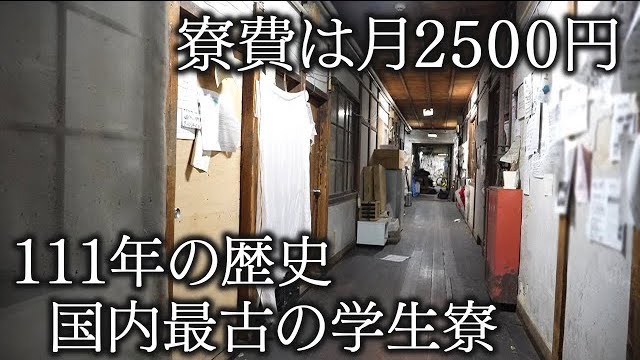World-renowned for their quality and beauty, Japanese kitchen knives are some of the best in the world.
Although everyone seems to know this, people seldom seem to know why, or what goes into these veritable works of art. From having to work on their Intertops poker bonus, work, or simply spending their time doing other things, nobody seems to know.
Well, this time consuming and extremely difficult to master process is what makes these knives so great. From their beauty to their razor-sharp edges, these knives are truly awe-inspiring. So, we are left with a simple question. What goes into making them so great?
Forging
The process of making one of these knives starts just the same as many other kinds of forging. It starts, with an ingot of carbon steel. But how does this ingot become a knife?
The first step for some of these knives is to fold the steel. This involves heating up a sort of “steel sandwich” until it is white-hot and then pounding and folding the metal to make more layers. This will make what’s called Damascus steel and will give the knife a beautiful finish.
After this is the basic shaping. The ingot is heated up in a blast furnace until it’s white-hot. Then, the beginning of the hard parts begin! The glowing steel is pounded either by hand or by a hydraulic power hammer into a rough knife-like shape.
Then, the steel is continued to be hammered out. Slowly, little by little, they will get the proper shape for the blade. This is quite difficult, however, as the knives are preferred to be thicker along the spines and thinner by the blade. This is to keep the knife strong while still allowing it to cut cleanly.
From here, the knife begins the cold forging process. Cold forging? Isn’t that counterintuitive? No! During this process, the knife is pounded with hammers to smooth out the steel. This cold forging process will also help strengthen the steel. The hammering will cause the steel to harden.
Although Japanese knives are crafted by hand, there is a stamping part of the long process. First, the knife is brought to a stamping machine. Here, The rough blade is stamped through a mold into the perfect shape they want. After this, the knife is rolled through a special roller to help straighten it.
Even though the shape of the knife has been completed, it is not done yet! The next step that is taken is to harden the blade and make it stronger. For this, the knife is brought to another furnace and heated up to 1000 degrees centigrade!
The heat itself is not what makes the blade hard, however. This is caused by a process called quenching. After the blade is heated up to a very high temperature, it is quickly dunked into a bath of oil or maybe water. This rapidly lowers the temperature of the blade and causes it to harden on a molecular level. Now the blade is strong!
At this point, the blade has come a long way in its path to becoming a knife. It is time for the final steps that will turn it from a useless piece of steel, into a masterwork tool for homes and chefs everywhere.
The first of these steps is straightening the blade. After all the forging, stamping, heating, and quenching, the blade is bound to have gotten a few bends and curves in it. So, one of the craftsmen must straighten the blade. Working at an anvil with a hammer, the blade is carefully pounded to straighten it out and make it symmetrical.
Finishing
Now that the blade is straight, the long process of grinding and sharpening can begin. The first step in this is the rough sharpening. During this process, the blade is ground down to the general shape that is wanted. It won’t quite be sharp yet, but it's on its way!
After the rough sharpening, the next step is a process called the middle sharpening. During this process, the blade is continued to be ground down. However, now the craftsman switches to a finer grit whetstone. It is during this process that the grind of the blade is straightened so it will be smooth from blade to spine.
In between the middle sharpening and the polishing, a new tang is welded onto the knife. The tang is a metal part of the knife that is attached to the blade and goes through the handle. This is fitted for a handle of the craftsman’s choosing. It could be wood or any other number of materials.
After the welding, the blade is polished. During this step, using various pastes and polishing wheels, the blade is buffed and polished to a mirror shine. Now, the beautiful Damascus steel pattern begins to show!
The handle also needs polishing. First, it is sanded into the final shape it will have. Then, the sandpaper grit is increased gradually to slowly polish the wood and make it beautiful.
Now there is only one last step before the final sharpening! The blade is now sandblasted. This is just one final process to smooth out the blade and get rid of any remaining surface impurities.
Then there is finally the penultimate step in this masterwork blade's creation. It’s finally time for the blade's final sharpening. The blade is now passed along yet another fine-grit whetstone to sharpen the blade. This will give the blade it’s final edge.
Now at last we’ve come to the final step! The blade is now finished on one final stone to remove what is called a burr. This is a microscopic imperfection on the edge that can hamper its ability to cut.
Finally, with the burr removed, the knife is done! From ingot to knife it is a long and arduous process, but also a fascinating one. It truly is no wonder that these knives are world-renowned.
The Masters and a Dying Trade
Despite the immense creativity, artistry, and devotion that these knives have, sadly, this is a dying field. In an age of mass production and industrialization, the place for old artisans is slipping away.
In some places in Japan, there are now only one or a handful of knife makers left out of what used to be hundreds. The sad truth is that it’s hard to sell knives that are practically art pieces. The average person just can’t afford them. Even if they could, they would probably be too afraid of damaging them to use them.
And it isn’t just how the knives are made. It’s just simply extremely taxing to try and make one of these knives. Even more so to learn how to. It can take years to master even a single step in the long process of knife making. Years more to master the whole process.
So, where does that leave them? How has this trade managed to survive? The fact is, for many it hasn’t. For those it does, it is because of a lot of connections. Owners have had to go out and bring their customers to them, where in the past it would have been visa versa.
Although this beautiful trade may be dwindling, it hasn’t died yet. And, I doubt it will. There will always be craftsmen, and there will always be at least someone willing to buy from them. Although there may not be many craftsmen left, I think that lets us appreciate these beautiful pieces of masterwork craftsmanship all the more.










